In the busy city of Technoville, the startup ByteCorp faced growing challenges in server management as their user base expanded rapidly. Initially, they struggled with server capacity and downtime, prompting them to migrate their infrastructure to the cloud.
While this solved some problems, new obstacles arose, such as soaring cloud expenses. ByteCorp responded by hiring cost management specialists and implementing automation tools to optimize resource usage. They also addressed security threats by establishing a dedicated team, implementing access controls, encryption, and regular security audits.
Does all that seem familiar? If so, then you are not alone, most businesses encounter the same server management challenges. How to overcome them? By mastering the art of server management..
Server Management: The Ultimate Guide
What Is Server Management?
Server management is the process of managing your servers which includes everything from server administration to server maintenance. Server management is basically a broad term which encompasses everything from installation to configuration, monitoring to troubleshooting, backup management to software update installation. The primary objective of server management is to make sure your server delivers optimal performance, provides foolproof security and offers great realizability.
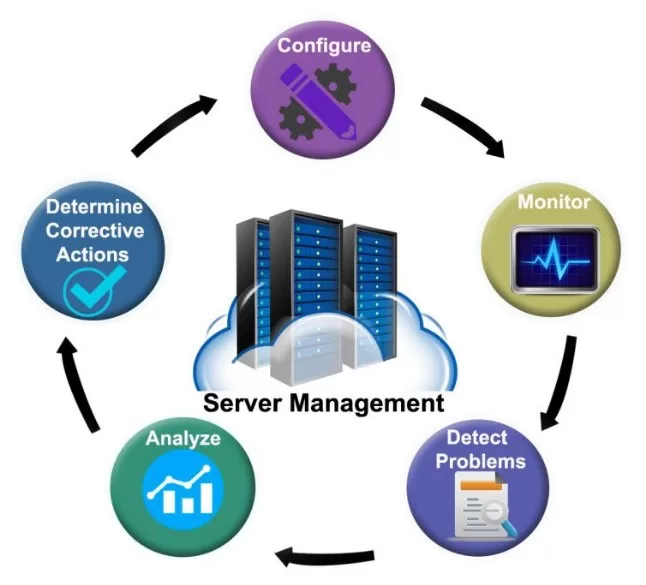
How Does Server Management Work?
Server management typically encompasses several key components, including:
- Server provisioning: This involves setting up new servers with the required operating system, software, and network configurations.
- Monitoring and performance optimization: Continuous monitoring helps detect issues, track performance metrics, and optimize resource utilization.
- Security and patch management: Regular updates and patches are applied to protect servers from vulnerabilities and ensure data security.
- Backup and disaster recovery: Implementing reliable backup solutions and disaster recovery plans to protect against data loss and facilitate quick restoration.
- Troubleshooting and issue resolution: Prompt identification and resolution of server-related issues, such as hardware failures, software conflicts, or connectivity problems.
- Capacity planning: Assessing resource utilization trends and forecasting future requirements to ensure adequate server capacity.
Who Needs Server Management?
Server management is essential for various organizations and individuals, including:
- Small to large businesses: To maintain their online presence, handle customer data, and ensure smooth business operations.
- IT service providers: Offering server management services to their clients.
- Web hosting providers: Managing servers for hosting websites and applications.
- Developers and system administrators: Overseeing servers for their specific development or operational needs.
What are the different types of Server Management?
There are two main types of server management
- Hardware management
- Software management
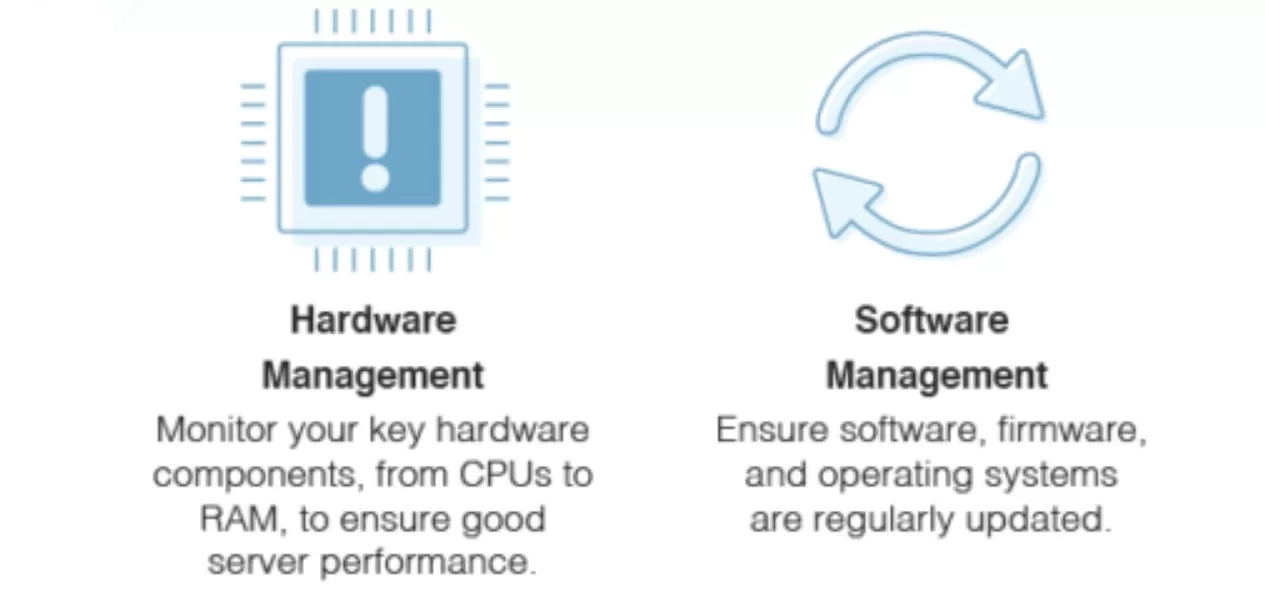
Hardware Management:
Hardware management in server environments involves the administration and maintenance of physical server components. It includes tasks such as:
- Hardware Procurement: Selecting and purchasing server hardware based on performance requirements, scalability, and budget considerations.
- Installation and Configuration: Physically installing servers in data centers or rack cabinets and configuring them with necessary components such as CPUs, memory, storage drives, and network interfaces.
- Monitoring and Health Checks: Utilizing hardware monitoring tools to track server health indicators, temperature, fan speed, power usage, and other metrics. Performing periodic checks to identify and address hardware issues proactively.
- Hardware Troubleshooting: Investigating and resolving hardware-related problems, such as faulty components, overheating, power supply failures, or disk errors.
- Capacity Planning: Analyzing hardware resource utilization trends to forecast future requirements and determine when additional server resources need to be added to accommodate growth.
Software Management:
Software management involves the administration and maintenance of the server’s operating system, applications, and other software components. Key aspects of software management include:
- Software Updates and Upgrades: Keeping applications up to date by installing the latest software releases, new features, bug fixes, and security patches.
- License Management: Ensuring compliance with software licenses and tracking license usage to prevent unauthorized usage or violations.
What are the Challenges of Server Management?
Some of the common challenges of server management include:
- Skill and Resource Gap: Server management requires skilled professionals with expertise in hardware, operating systems, networking, security, and other areas. However, finding and retaining qualified server administrators or outsourcing server management services can be challenging due to the shortage of skilled resources.
- Cost Management: Server management involves costs associated with hardware, software licenses, maintenance, and skilled personnel. Optimizing costs while ensuring efficient server management and meeting business needs can be a balancing act.
What are the Pros and Cons of Server Management?
Pros:
- Improved server performance: By optimizing your server regularly, and continuously monitoring it, you can get the best performance out of your servers.
- Reduced downtime: Proactive monitoring and issue resolution minimize server downtime, leading to uninterrupted services.
- Scalability and flexibility: Server management allows for efficient scaling of resources based on business needs and ensures flexibility in adapting to changing requirements.
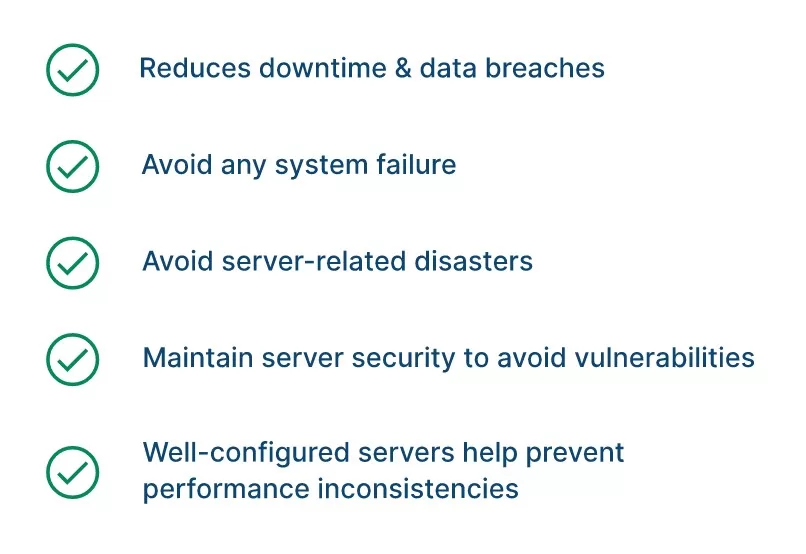
Cons:
- Time and resource-intensive: Server management requires dedicated time, expertise, and resources to ensure effective administration and maintenance.
- Server Setup and Configuration: Setting up and configuring servers can be quite intricate, particularly for individuals without prior experience in this domain. The process involves various steps and technical considerations, making it a complex endeavor.
- Cost: The cost aspect of server management can also be significant. The expenses associated with server infrastructure can vary based on factors such as scale and complexity. Server costs encompass not only hardware and software requirements but also the allocation of human resources to handle server administration tasks.
Server management demands substantial investments in terms of time, expertise, and financial resources. It necessitates careful attention to ensure efficient functioning and can involve considerable expenses to establish and maintain an effective server infrastructure.
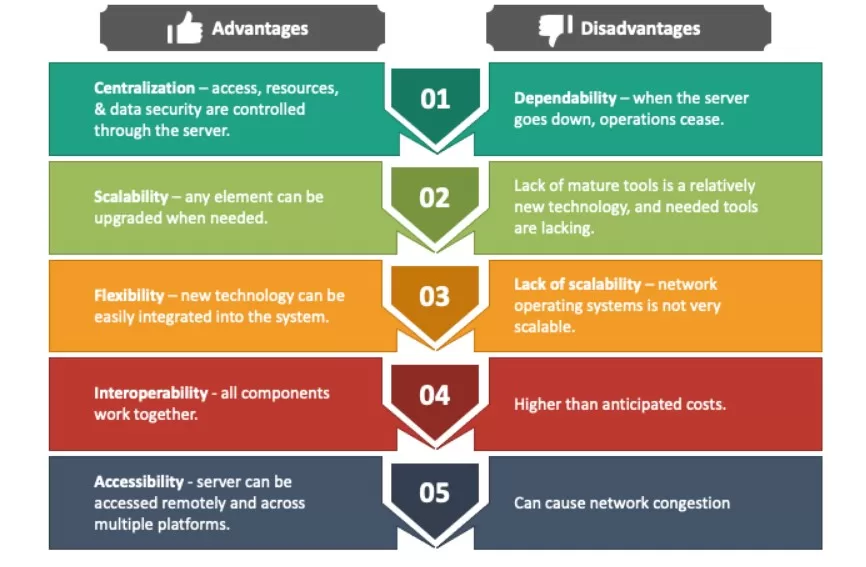
What are some of the server management best practices?
To ensure effective server management, keep the following best practices in mind:
- Have a Backup Strategy: To safeguard your data and ensure quick recovery in case of any mishaps, it is crucial to establish a reliable backup strategy. This involves implementing a comprehensive plan that includes regular backups of your server data. By doing so, you can protect against data loss and swiftly restore your systems when needed.
- Implement Security Measures: Security is an integral part of server management and can not be ignored. Implementing robust security measures is essential to protect your servers from unauthorized access and potential breaches. This includes implementing access controls to restrict user permissions, utilizing encryption techniques to safeguard sensitive data, and deploying intrusion detection systems to promptly detect and respond to any security threats.
- Maintain accurate documentation: Maintaining accurate documentation is a valuable practice for effective server management. It involves keeping detailed records of server configurations, network diagrams, and troubleshooting procedures. This documentation serves as a valuable resource for troubleshooting issues, ensuring consistency in server setups, and facilitating efficient communication among team members.
By incorporating these practices into your server management approach, you can establish a robust and well-protected server infrastructure. This not only helps prevent data loss and optimize performance but also streamlines troubleshooting processes and enhances overall system reliability.
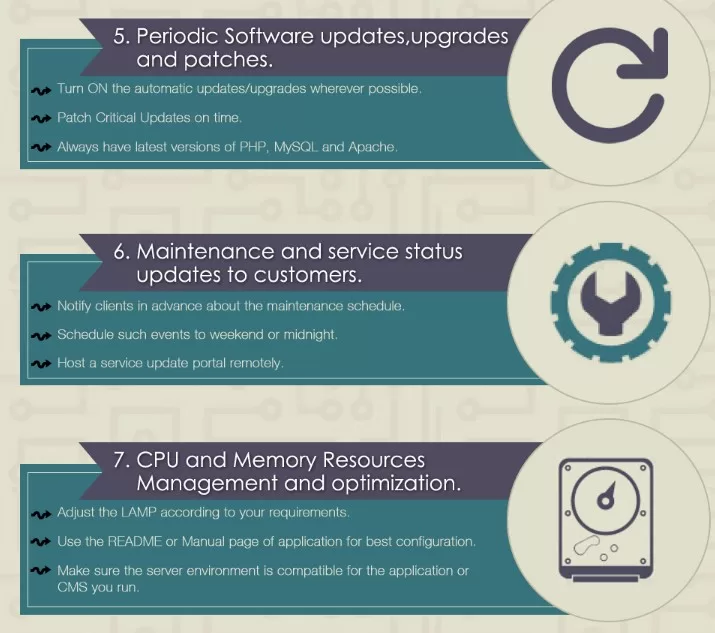
How To Manage Servers?
Effective server management involves a structured approach. Here are key steps to consider:
- Planning: Determine the server requirements, including hardware specifications, operating systems, and software dependencies.
- Installation and configuration: Install the chosen operating system and configure server components as per the desired setup.
- Monitoring and maintenance: Deploy monitoring tools to track server performance issues, resource utilization, and identify any anomalies. Perform regular maintenance tasks, including updates and patches.
- Security management: Implement server security measures such as firewalls, access controls, and encryption. Regularly update security software and maintain backups.
- Issue resolution and troubleshooting: Promptly address server-related issues, perform root cause analysis, and apply appropriate fixes.
- Capacity planning: Monitor resource utilization trends, forecast future requirements, and scale server infrastructure accordingly.
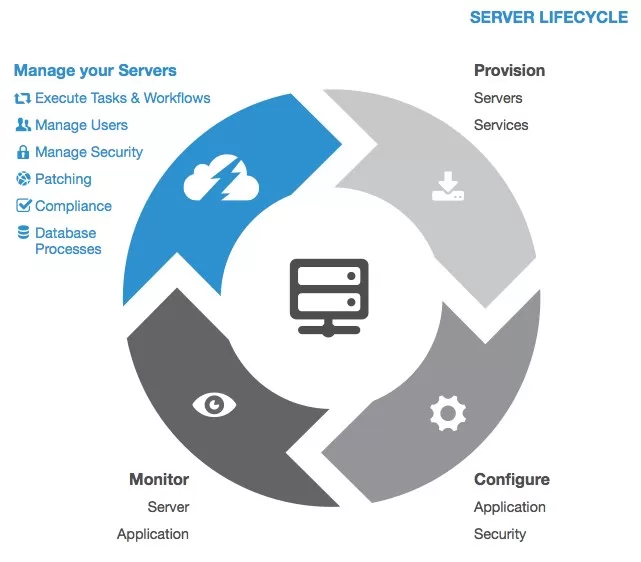
Did this guide help you in understanding server management? Provide your feedback in the comments section below.








